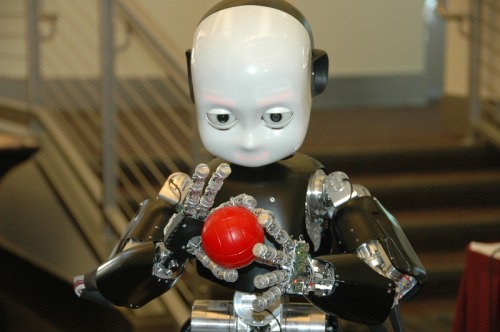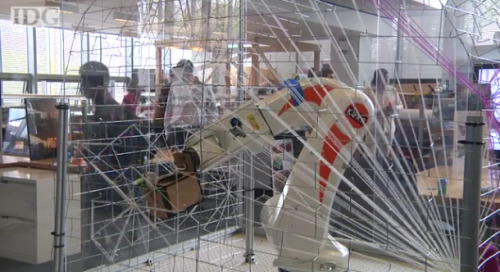
Not all would agree but I think this advancement in robotics could be a gigantic leap in the way artificial intelligence (A.I.) grows in future robots that will need some kind of advanced A.I. For instance, how do we suppose any sentient being with the capacity to learn..learns? Although it may not be the paramount function of robotics, communicating is definitely up there in the list of obstacles needed to be apprehended if we are to have competent robots making human interactions. For it is because of communication that we learn to pass on data, and language is a form of it.
Think of it this way, a robot that understands how language works and even knows how to use it, is a robot that has been given a new pathway to understanding. A pathway that we as humans have acquired and while we haven’t mastered it I believe we do have enough experience with it to imitate it and implement it in fields where it is most needed. What I really took from this article however is the fact that the researchers looked at how the brain actually works in order to mimic the way we form and understand language. This is how robotics ought to be looked at, we see our biological nature and mimic it to the best of our abilities using technology. Working with simpler versions while upgrading along the way.



